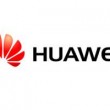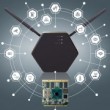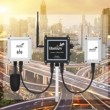

The industrial Internet of things (IIoT) is ushering in game-changing business opportunities for the process industries. It’s come at a time where pressure is high, margins are thin and everyone is craving a (more…)
November 17, 2016
Posted by: Avadhoot Patil

The Smart Energy Innovation Center, Huawei’s network energy experience centre, has been inaugurated in Nuremberg, Germany this week. (more…)
Posted by: Avadhoot Patil

congatec – a providing technology company for embedded computer modules, single board computers and embedded design and manufacturing services – appointed Martin C. Frederiksen as sales director (more…)
Posted by: Avadhoot Patil

oneM2M, the global standards initiative for Machine-to-Machine (M2M) and the Internet of Things (IoT), will host its third interoperability event in Kobe, Japan, from Tuesday, November 29 to Friday, December 2 2016. The event follows successful test sessions in France and South Korea. (more…)
Posted by: Avadhoot Patil

u-blox, a global provider of wireless and positioning modules and chips, has become an official member of ESMIG (the European voice of smart energy solution providers). (more…)
November 16, 2016
Posted by: Avadhoot Patil

At Smart City Expo, Libelium presented the new generation of the IoT Sensor Plaform for Smart Cities with more accurate sound level and air quality sensors. These sensors address current market demands of higher precision and are aimed to complete the professional equipments to increase city capillarity. (more…)
Posted by: Avadhoot Patil

At trade shows across the world, product companies are unveiling a wide range of connected devices in a bid to get a slice of the growing Internet of Things market. (more…)
Posted by: Avadhoot Patil

People must feel safe and secure with the Internet of Things before it can reach its full potential – and there are a lot of things that still need to be addressed, Greenwave Systems’ chief scientist and technology evangelist Jim Hunter warned today. (more…)
November 15, 2016
Posted by: Avadhoot Patil

The Internet of Things is increasingly meaning that, far from simply being for checking emails or browsing Amazon, the internet is becoming a part of our everyday lives, even those that are ‘offline’. Far more everyday objects are now connected to the internet – many of these being home appliances. (more…)
November 14, 2016
Posted by: Avadhoot Patil

The Internet of Things (IoT) is no longer just futuristic talk in the technology industry. Its real world application and its value are being realised, says Jonathan Duffy of Netclearance. (more…)
Posted by: Avadhoot Patil